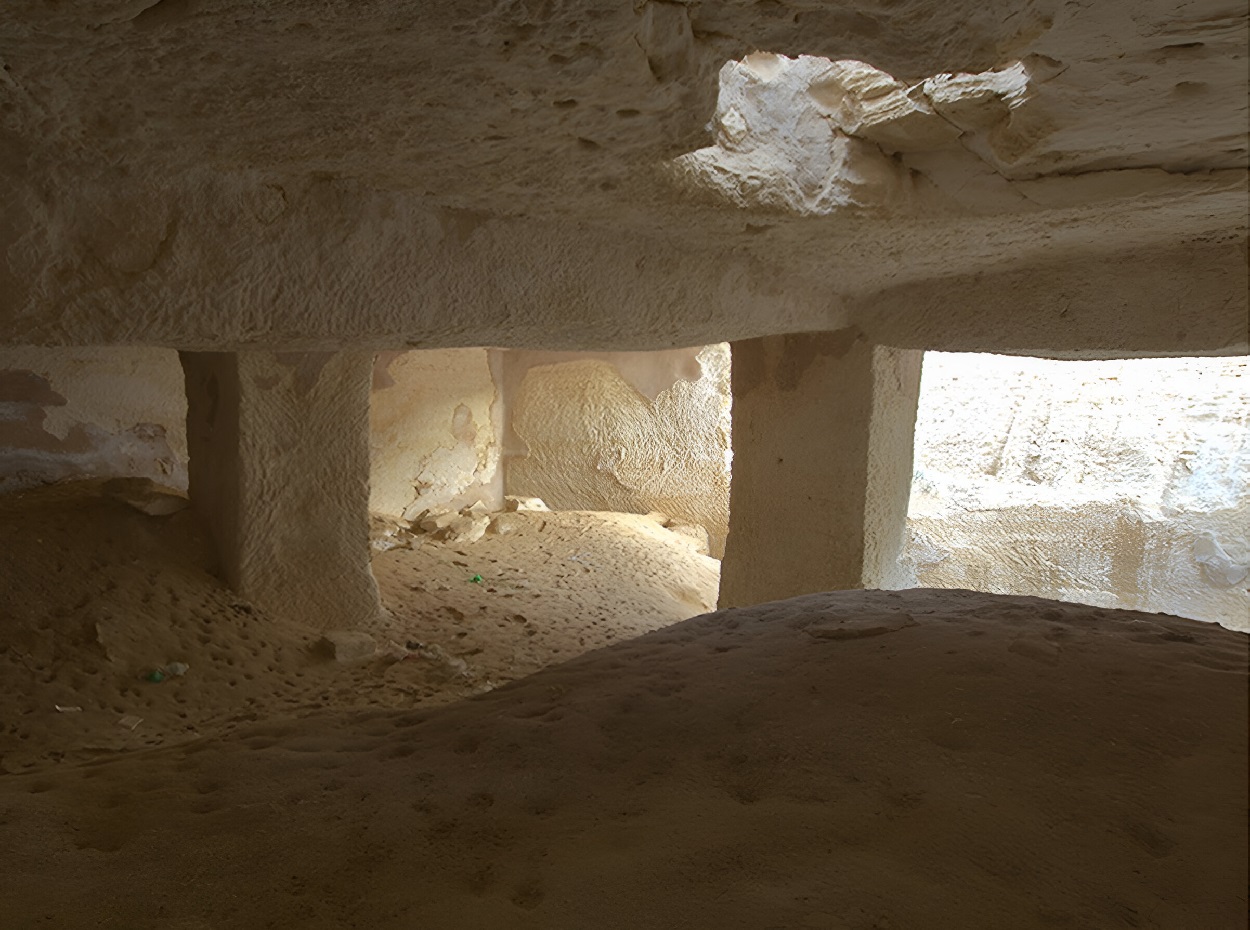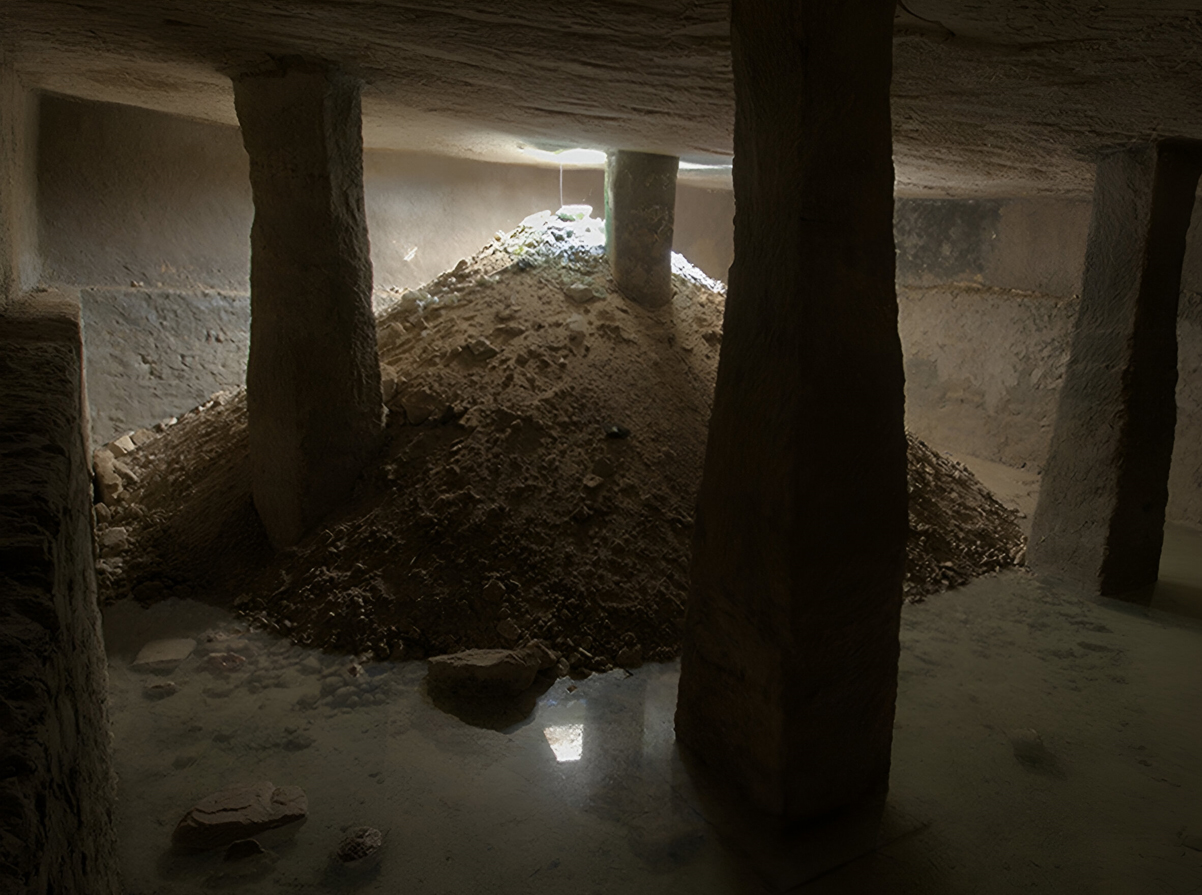Archaeologists excavating at Darazya in the Mareotis region of Egypt have discovered two large subterranean cisterns.
During antiquity, Darazya was a Greco-Roman town that may align with descriptions in ancient texts by Strabo and Claudius Ptolemaeus, who mention the port of Derhis, located approximately 100 kilometres west of Alexandria.
In more recent history, the site was the setting for the Battle of El Alamein, a key engagement in the Western Desert Campaign of World War II, fought between Axis forces and the British/Commonwealth 8th Army.
Interspersed throughout the site are WWII structures used by British Army units from 1941–1942, and a large network of 17 underground shelters linked by passageways.
Recent excavations have uncovered two subterranean cisterns with a quadrangular design, accessible via narrow shafts extending from the surface. Each cistern chamber is around 5 metres in height and have rectangular pillars carved into the limestone bedrock for supporting the weight of the ceiling.

According to the authors of a study published in the journal Antiquity: “These well-preserved cisterns and channels provide a better understanding of the extensive water supply systems of the settlements in this semi-arid area.”
Excavations have also uncovered numerous ancient structures, such as oikos-type dwellings that were built with rubble masonry and survive to a height of up to 1.6 metres.
Surface finds include sherds of amphorae, cooking pots and frying pans, imported a pareti sottili bowls, and fragments of decorated stone altars and cornices, possibly from cult niches which would suggest domestic worship.
“The 2021 and 2022 seasons confirmed the considerable historical value and research potential of the site. After conservation, the site is sure to become a regional tourist attraction,” said the study authors.
Header Image Credit : P. Zambrzycki & S Poplawski
Sources : Antiquity – https://doi.org/10.15184/aqy.2024.192





